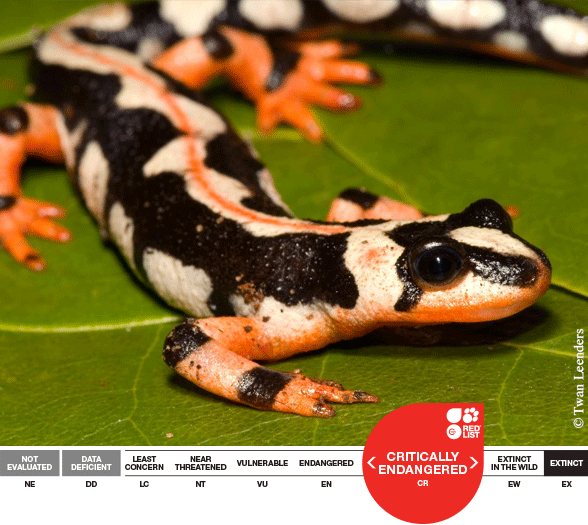
The Luristan Newt, Neurergus kaiseri, is listed as ‘Critically Endangered’ on the IUCN Red List of Threatened Species. It is a small species, reaching only 13 cm in length, and is found only in the Luristan Province of Iran. It is thought that the striking mosaic of black and white patches and its fiery orange dorsal stripe serve to warn potential predators of its toxicity.
It is threatened by habitat loss, recent severe droughts and the damming of the few inhabited streams. In the past one of the greatest concerns for this species was the increasing collection of wild individuals for the international pet trade, however the listing of this species on CITES Appendix I, along with a surge of newts bred by zoos and hobbyists, that have been sold back into the pet trade, has effectively decreased the monetary value of this species and ended the collection and international trade of wild newts. The Sedgwick County Zoo in the US raised funds raised from the sale of zoo-bred newts to help support a year of field research and surveys in Iran.
This species is protected by Iranian national legislation, but immediate action is needed to prevent the illegal export of this attractive newt. A captive breeding program was established in Europe in 2003 and a management group representing zoos, universities and private breeders works cooperatively to increase the captive population and to document ideal management conditions.
